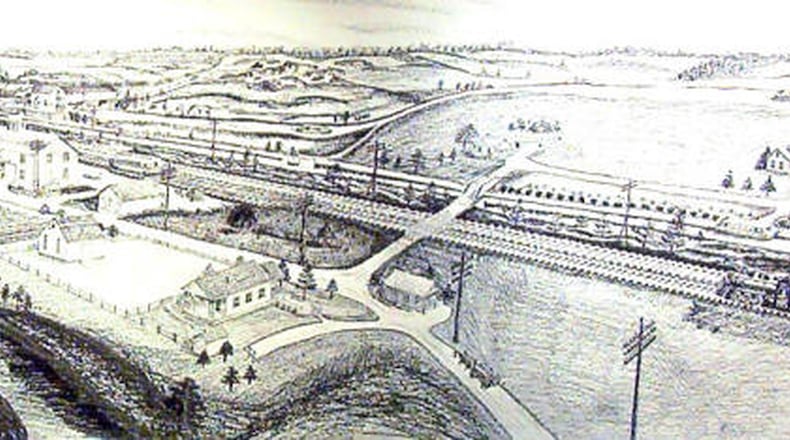Then, the Great Flood of 1913 struck. The flood destroyed most of the village that included the Miami-Erie Canal, floated buildings down river and caused the local railroad to move the tracks to higher ground elsewhere.
Through the years after the flood, the important National Road was re-routed over the Taylorsville Dam. Residents left, and Tadmor became a ghost town.
The Vandalia-Butler Historical Society has preserved the area because it was a prime location for transportation in Ohio during the 19th century and has shared its history.
The Park District of Dayton-Montgomery County maintains signs of the village and trims brush from the Buckeye Trail. The trail leads to an old tow path straight through Tadmor. You can access this from National, west of the Taylorsville Dam on old Canal Road.
The historical society hopes the little village of Tadmor will not go unnoticed. Remnants of the village can still be seen.
MORE QUIRKY HISTORY: When an infamous gang made a midday, $75K Dayton jewelry store heist in 1936
In the early 1800s, Tadmor became a centerpiece of 19th century transportation. The Miami Canal was started in Cincinnati in 1825, and by 1829, it had reached Dayton.
The Miami aqueduct and the Miami extension began in 1833 just north of Dayton. Over eight years, the canal made its way to Troy and linked Wabash and Erie Canal. Once it was linked, the Miami and Erie Canals became to be.
Southwestern Ohio was able to finally transport products to markets in the south and the east. Flour, whiskey, pork, lard, apples, nursery stock and grain were shipped by way of the canal.
The 1830s brought on the National Road construction, which connected points from the east and west. National Road was able to bring the city of Vandalia to life.
The section of National Road through Tadmor became a ghost road at one point because the railroad was more prominent in that area. National Road became a toll road and never made a real profit. It was used as what historians would call a National Highway of that century.
By 1851, more transportation routes were added. The Dayton and Michigan Railroad established freight and passenger service to the town. This became the more prominent way of transporting. Railroads do not freeze in winter, wash out or suffer from a drought.
A Civil War soldier name Walter Crook was the main postmaster, station agent, warehouseman and grain dealer in the little village. But all the small hustle and bustle of Tadmor would soon be diminished by 1913.
About the Author
